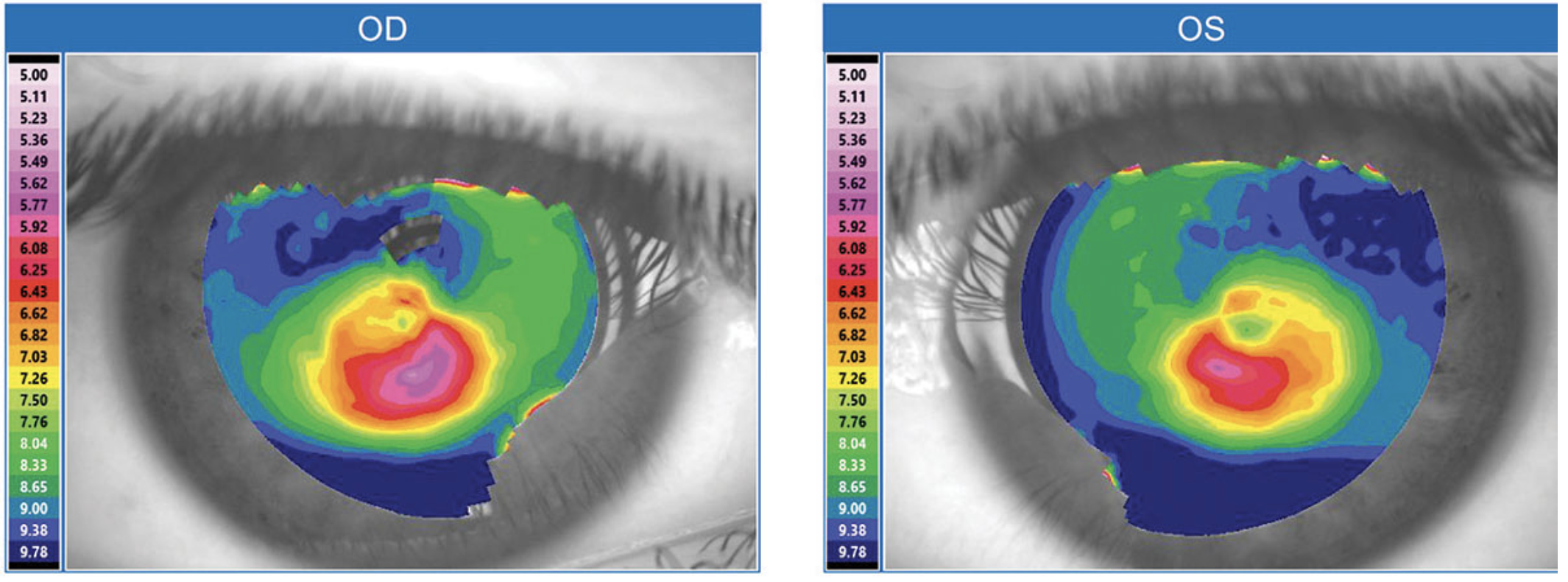 |
|
Taller people, particularly women, were found to be at a lower risk of developing steep corneas. Photo: Deepak Gupta, OD. Click image to enlarge. |
A recent study published in Cornea assessed the associations of anthropometric features with the presence of steep cornea and investigated potential sex-specific factors. The team reported a strong inverse relationship between height (adjusted for weight) and steep cornea in the overall population and in women specifically. For each one-inch increase in height, there was a 16% lower odds of steep cornea in the overall population and a 20% reduction in women. For each one-inch increase in a person’s height, there was also a 0.10D decrease in corneal refractive power in the overall population, independent of gender.
The researchers assessed these relationships using logistic regression models with steep corneas defined by corneal power ≥48.00D as used in previous studies due its high specificity and sensitivity for ectatic corneal disease. The study included participants from the 1999 to 2008 US National Health and Nutrition Examination Survey visual examination. The team found 171 cases with a mean dioptric power ≥48.00D, averaged across the meridians.
There was no significant association between BMI or weight and steep cornea. Height had the strongest association with steep cornea. This effect persisted after adjusting for education, race and socioeconomic status.
The team had no data on nutrition and physical activity, which are formative factors that influence height and weight. They believe this information may be needed to better understand their role in this association.
“Further study of the relationship of height with steep cornea may yield mechanistic insight into the pathogenesis of corneal ectasias and genetic correlations,” the team concluded in their paper.
Valluru G, Henick D, Klawe J, et al. Anthropometric measures and their relationship to steep cornea in the United States population. Cornea. December 13, 2022. [Epub ahead of print]. |


